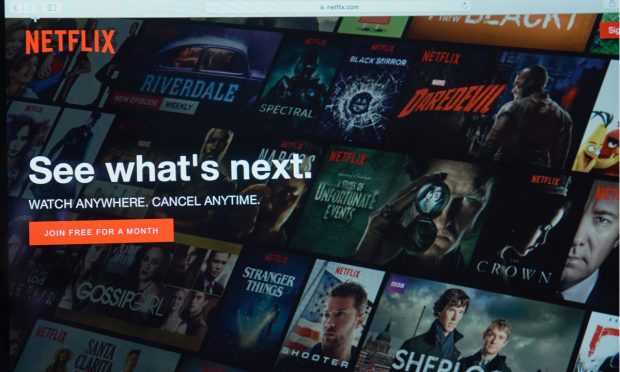Netflix 5.0 to Measure Revenue, Not Subscribers

It may have taken 25 years and at least five distinct cycles of evolution to get here, but “Netflix 5.0” if you will, is setting up to be a profit-driven animal the likes of which the streaming media universe has never seen before.
From its mail-in DVD origins in 1997 to its first run at streaming movies ten years later, to its embrace of original content like Breaking Bad and Orange is the New Black, to its international expansion and most recently the upcoming launch of its low-priced Basic With Ads service, today’s Netflix bears little resemblance to its historical predecessor, especially when it comes to making money rather than just piling up subscribers.
“When we look at that and the fact that we think that this lower consumer-facing price [$6.99/mo for the new ad supported service] will bring in a lot more members, then we’re quite confident in the long term that this will lead to a significant incremental revenue and profit stream,” Netflix COO Greg Peters said on the company’s third quarter earnings call held after the close Tuesday (Oct 18) night.
But it’s not just viewers that are interested in this latest iteration of Netflix — the company said that advertisers are pretty excited about it too. Having been walled-off from getting in front of some of the largest and most passionate audiences in all of entertainment for the past 20 years, to finally get a shot at that 200+ million person viewer base is a big deal.
“I would say that the initial demand that we’re seeing is very strong,” Peters said. “People are very excited about the proposition of bringing their brands and their ads to a bunch of consumers around the world that are watching our shows,” he added, noting that the demand for ad sales has been “very, very strong.”
Pay to Play
While the evolution of Netflix is happening in real time, much of what is being done today to adapt to changing consumers, new competition and economic conditions was set in motion long ago.
Take the company’s threatened crackdown on password sharing, for example, which is now pegged to take effect in the New Year but has been an open wound for over a decade. Where previously the company would just grow its way through problems like this, the profit-minded Netflix 5.0 has a different view, as evidenced by its new dual responses of profile sharing and paid account transfer.
“We’ve been working really hard to try and find essentially a balanced position and approach towards [profile transfer and paid account sharing] that supports customer choice, and frankly, our long history of customer-centricity,” Peters said, acknowledging the prior laissez faire approach to account theft.
Now, these account borrowers of yore will can either transfer the profile and viewing history they amassed under the old system and simply get their own account for example, when a child moves out on their own, or non-paying users can migrate their old profile to the lower-priced Basic with Ads platform and either pay the $7 bucks themselves or have someone else pick up the tab.
“We think [this dual approach] has informed how we think about establishing our service by balancing [user needs] with making sure that as a business we’re getting paid when we’re delivering entertainment value to consumers,” Peter said, adding that customer feedback to the different approaches tried in several countries has been positive, which suggests the company’s balanced approach will work.
Subjugating Subscribers
To be sure, the notion of “delivering entertainment value” in the streaming era can be a slippery thing, where active users can add or cancel accounts as a new show starts or finishes or lifestyle changes dictate, or they can simply stay subscribed on the belief that something worth watching will emerge.
In the past, the gold standard metric at Netflix has been subscriber growth (which, by the way, was up a better-than-expected 2.4 million last quarter — 60% of which came from Asia). Going forward, things will be viewed a little differently at Netflix 5.0.
Specifically, starting next quarter, Netflix will no longer provide guidance on subscribers.
“To focus on subscribers in our early days was helpfu,l but now that we have such a wide range of price points, different partnerships all over the world, the economic impact of any given subscriber can be quite different,” Netflix CFO Spencer Neumann said, particularly when comparing Netflix against other streaming services.
“So, that’s why we’ve been increasingly focused on revenue as our primary topline metric,” Neumann added. “This is going to be even more important as we head into 2023 and we develop new revenue streams like advertising and paid sharing, where membership growth is only one aspect of the revenue picture.”
For viewers and investors alike, the coming quarter and year are set to be a thriller of sorts and will surely keep people tuned in to find out what will happen next season, as the details and evolution of Netflix 6.0 start to take shape.
